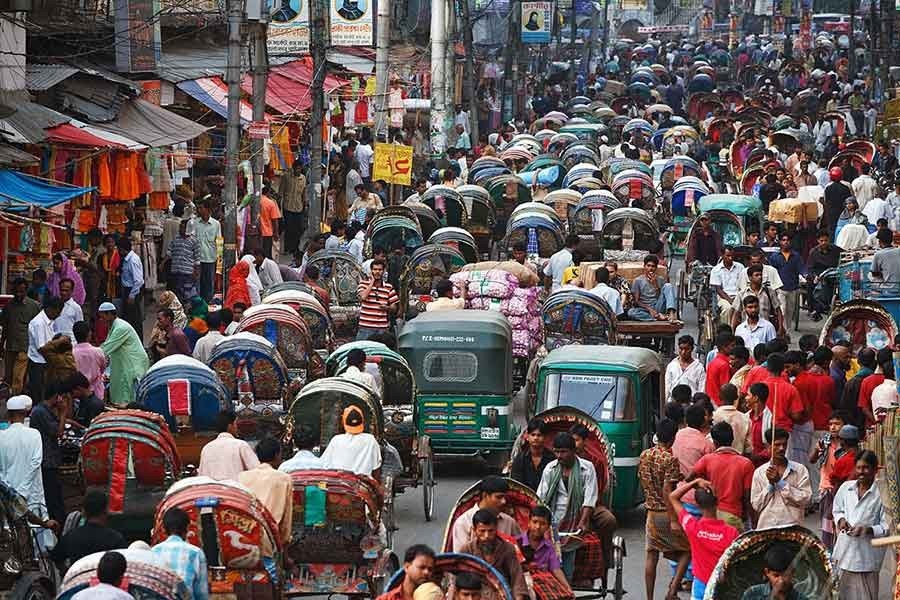
Published :
Updated :

The demolition campaign now being conducted by the Dhaka North City Corporation (DNCC) rather sternly has raised hopes for ridding the metropolis of illegal structures. The latter have been a manifestation of lenient, self-defeating urban governance. But 'clearing the mess' has a long way to go with the recurrent concern to deter the temporary victims from crawling back to their original locations. A pertinent question arises from the desperation of Dhaka's encroachers: why vast numbers of people continue to migrate to the capital already saturated with 20.628 million people in 2019. According to a World Bank survey, at least 400,000 people move in to Dhaka every year from different regions, especially the rural areas.
From a theoretical point of view, this fact appears to be befuddling. The country's rural areas these days are no longer backwater areas socio-economically. Although the remote villages still lag behind even the Dhaka outskirts in many respects, the overall situation today is far better than a couple of decades ago. The perennial outages notwithstanding, rural electrification has benefited people living in vast areas. Business activities based on innovative entrepreneurship launched by venturesome youths, and even women, have instilled vibrancy into the rural economy. Individual attempts to attain self-sufficiency are a common feature. To add to these winds of change, a lot of power-connected areas find themselves reaping the benefits of digital communication. Alongside the primary one, school and college-level education offers an impressive view.
Still many drawbacks haunt the vast rural expanses. Dearth of rewarding jobs and income generation activities remains a damper on a sizeable number of village people. That these disincentives will prompt many to try their luck in capital Dhaka is only natural. According to surveys, most of the rural people headed for the capital do not have any specific destination in mind. Many end up being floating people, with those financially better off finding a narrow space in a slum. Like the social and economic deprivations driving rural people to leave their ancestral homes, there are also a few other reasons behind the villagers entering Dhaka in droves. As estimated by International Organisation for Migration, 70 per cent of Dhaka's slum dwellers entered the capital in a bid to flee one or another 'environmental shock'. Foremost of these 'shocks' is river erosion. In spite of the successive governments' efforts to ensure villagers a smooth living, they apparently failed when it came to dealing with the nature's fury. Apart from erosion, squeezing of agricultural plots to use those for other purposes, loss of soil nutrients, recurring and untimely floods also wean villagers off their age-old professions.
It's also undeniable that life is a lot easier in the cities. Dhaka stands out as the most lucrative destination in the country. But the overarching demand is that the capital ought to go by its own rules of self-preservation. It can't allow seamless inward migration. Urban experts have long been advocating a remedy --- self-sustaining townships near villages as growth epicentres to hold and employ the jobless gainfully with vertical mobility in prospect to top it up. This approach should be prioritised and pursued in all earnestness for an efficient and productive management of a populous country.


 For all latest news, follow The Financial Express Google News channel.
For all latest news, follow The Financial Express Google News channel.